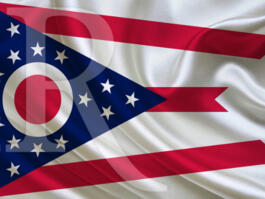The Logic of a Locavore
A Commentary By Froma Harrop
"Spoiled: Organic and Local Is So 2008," read the headline in Mother Jones magazine. You can imagine the snark that followed.
It takes no special aim to make fun of culinary obsessions over artisan goat cheeses and organic baby squashes -- though you wonder why fixations on baseball statistics and iPhone apps are not similarly mocked. In America, a fascination with food is still regarded as an effete indulgence.
But writer Paul Roberts has set up the "alternative food crowd" mainly as a straw-man army against which he scores easy political points: True, the organic movement has created some environmental contradictions. True, the models pushed by "activist foodies" -- that is, producing food locally and under strict organic rules -- don't work well on a scale needed to feed billions of people. "A $4 heirloom tomato is hardly going to save the world," Roberts quips.
But who said it would? And what does buying eggs from a nearby farmer have to do with gourmet delicacies? It's an old journalist's trick to portray fringe ideas as representative of larger movements. Who are these "activist foodies," anyway? Roberts doesn't name one.
I can't vouch for all fellow locavores -- we who seek out local foodstuffs -- but the author should know that I'm in this for myself. I'm not out to save the world, though I wouldn't mind saving some of my region's farmers. For me, mission No. 1 is to eat well.
Local food advocates look for superior taste and minimal chemicals on what they eat. And there's the cultural aspect. As communications make us less tethered to where we live, it seems ever more important to bond with our seasons and the soil under us.
Then there's the rationality part. Within a sea breeze from America's gorgeous fisheries, Sam's Clubs sell frozen blocks of haddock from China. Does it make sense for diners in Kansas or Pennsylvania to eat strawberries shipped from California during their own strawberry season? Once you taste the difference, it gets harder to buy strawberries from far away.
Local is so 2008? Yes, and it is also so 1908, 1608 and 508 B.C. Until the last 100 years or so, the "alternative food crowd" encompassed nearly all of humanity. This was before Gustavus Swift found a way to move refrigerated meat from Chicago to Eastern cities. This was before the federal government started irrigating California deserts at ludicrous cost. This was when apples that grew in New Zealand stayed in New Zealand.
Look, I'm grateful for Florida oranges, Honduran bananas and California lettuce in January. My steaks come from Nebraska. The blue cheese is from Iowa and sometimes France. But when seafood is on the menu, there's a certain logic in choosing crawfish in Louisiana, walleye in Ohio and Dungeness crab in Washington state.
About the $4 heirloom tomatoes: Some may regard paying an extra buck to experience the rich tomato taste that your great-grandparents enjoyed as an extravagance. They are entitled to feel that way. But last summer, I had a harder time forking over $4 for a gallon of gas.
With a $3.75 package of seeds from Burpee, one can produce 200 heirloom tomatoes. I grow some, along with lettuce, eggplant, string beans, squash and flowers -- all in a modest city backyard. As I figure it, my heirlooms cost about a nickel apiece. (My labor is free.)
In sum, the people crowding farmers' markets all over America do not seem receptive to the news that "local" is last year's thing. And so what if the local food movement can't feed the world. It can sure improve what ends up on our plates.
COPYRIGHT 2009 THE PROVIDENCE JOURNAL CO.
DISTRIBUTED BY CREATORS SYNDICATE, INC.
Views expressed in this column are those of the author, not those of Rasmussen Reports.
See Other Political Commentary.
See Other Commentaries by Froma Harrop.
Rasmussen Reports is a media company specializing in the collection, publication and distribution of public opinion information.
We conduct public opinion polls on a variety of topics to inform our audience on events in the news and other topics of interest. To ensure editorial control and independence, we pay for the polls ourselves and generate revenue through the sale of subscriptions, sponsorships, and advertising. Nightly polling on politics, business and lifestyle topics provides the content to update the Rasmussen Reports web site many times each day. If it's in the news, it's in our polls. Additionally, the data drives a daily update newsletter and various media outlets across the country.
Some information, including the Rasmussen Reports daily Presidential Tracking Poll and commentaries are available for free to the general public. Subscriptions are available for $4.95 a month or 34.95 a year that provide subscribers with exclusive access to more than 20 stories per week on upcoming elections, consumer confidence, and issues that affect us all. For those who are really into the numbers, Platinum Members can review demographic crosstabs and a full history of our data.
To learn more about our methodology, click here.



